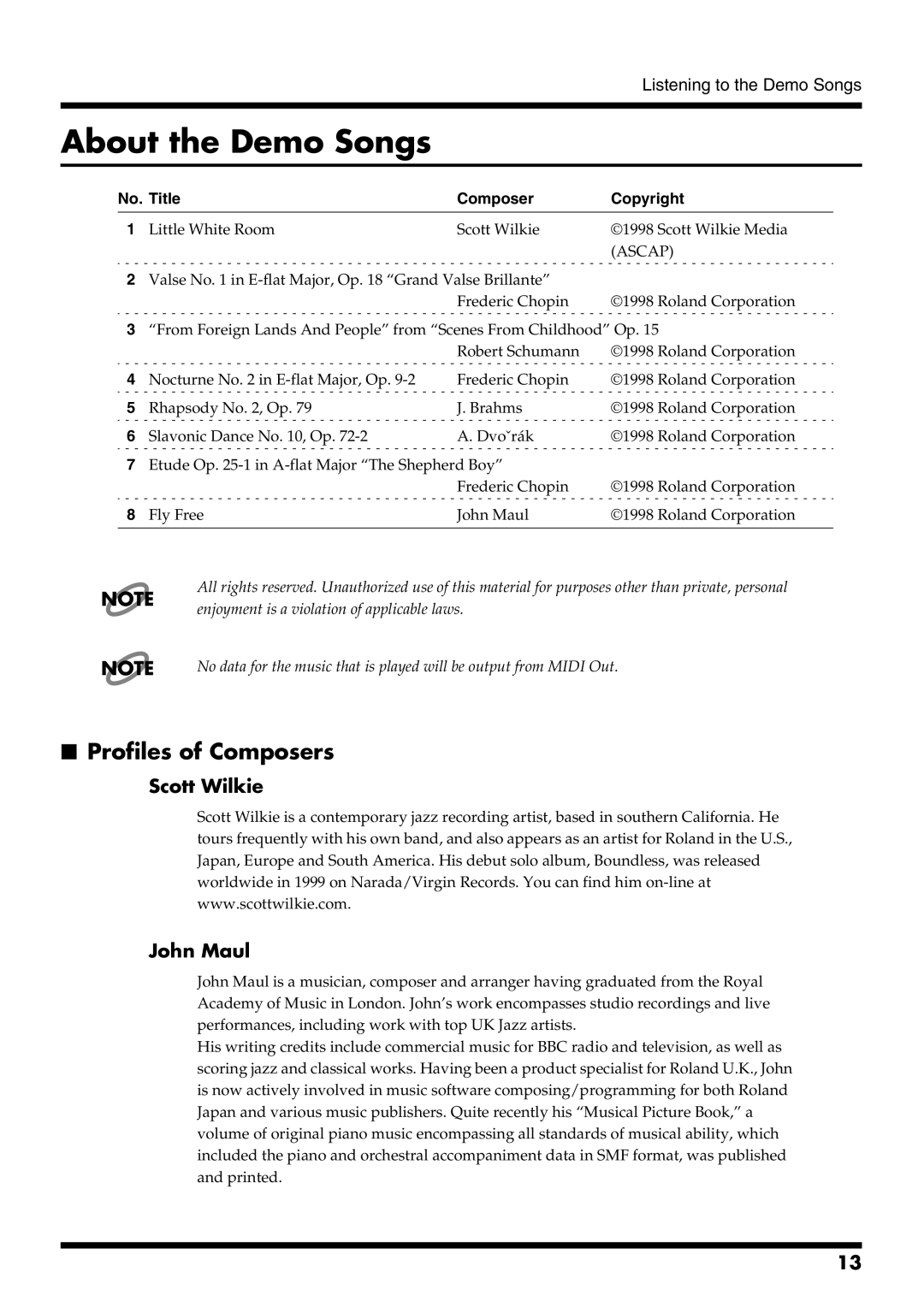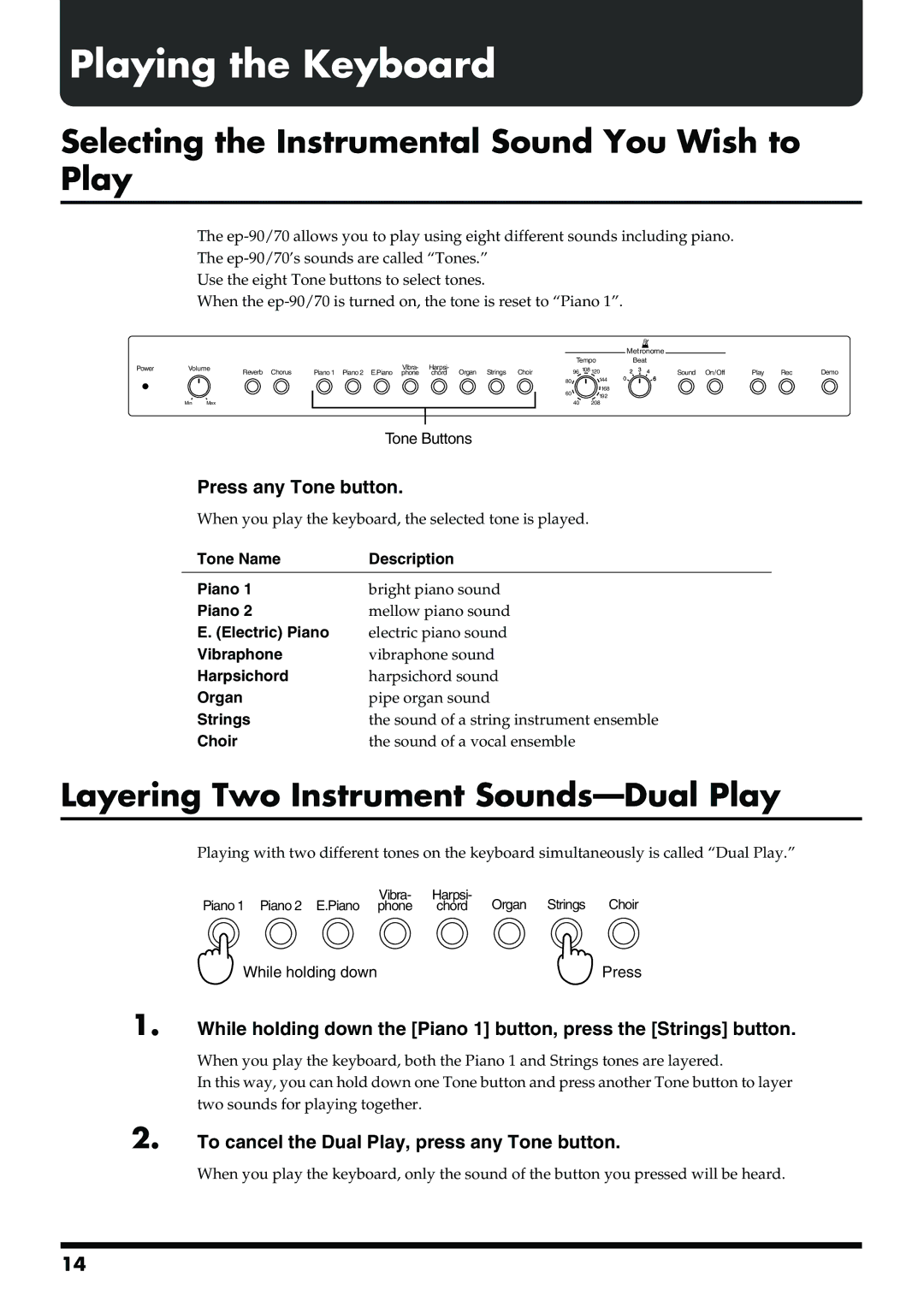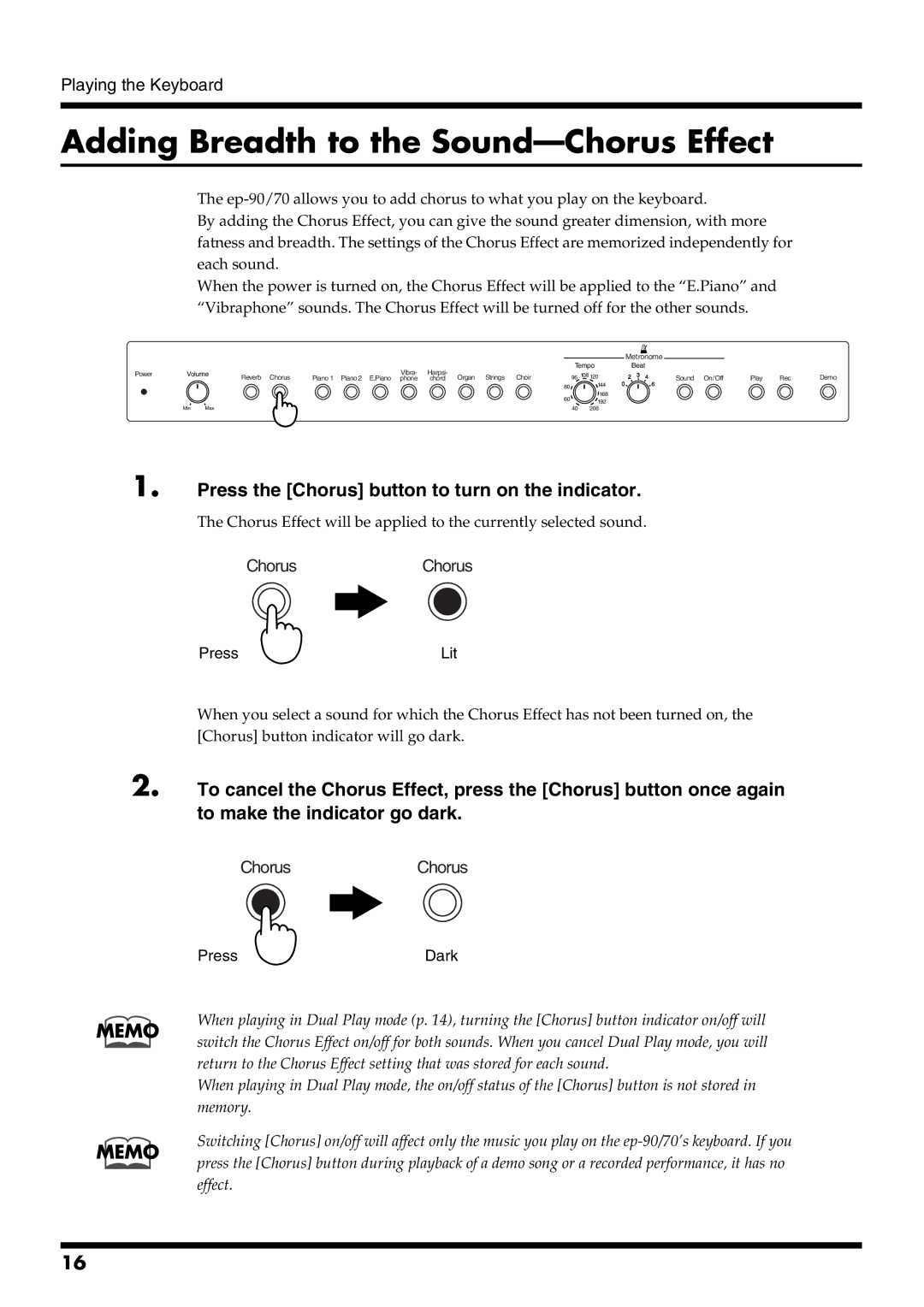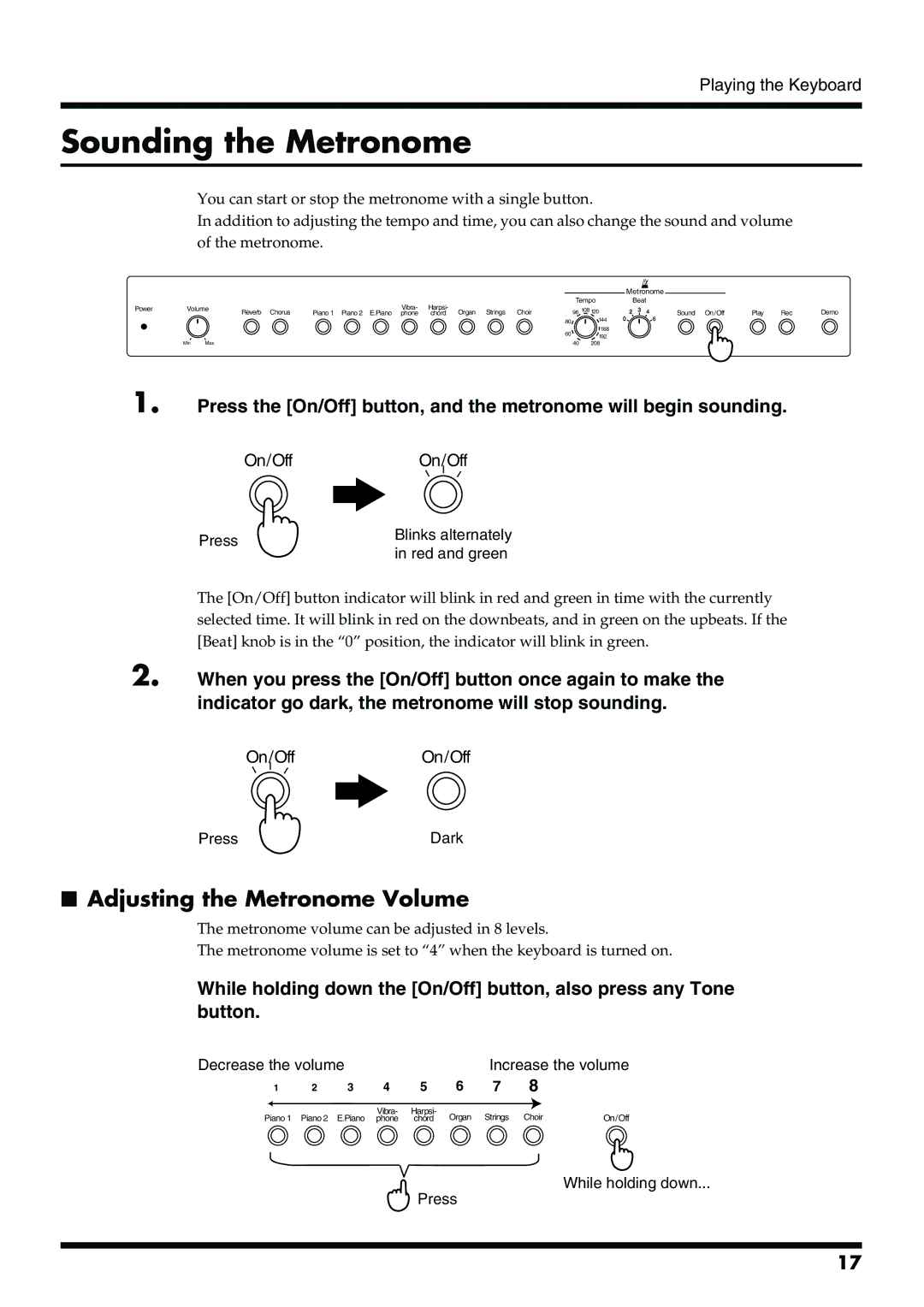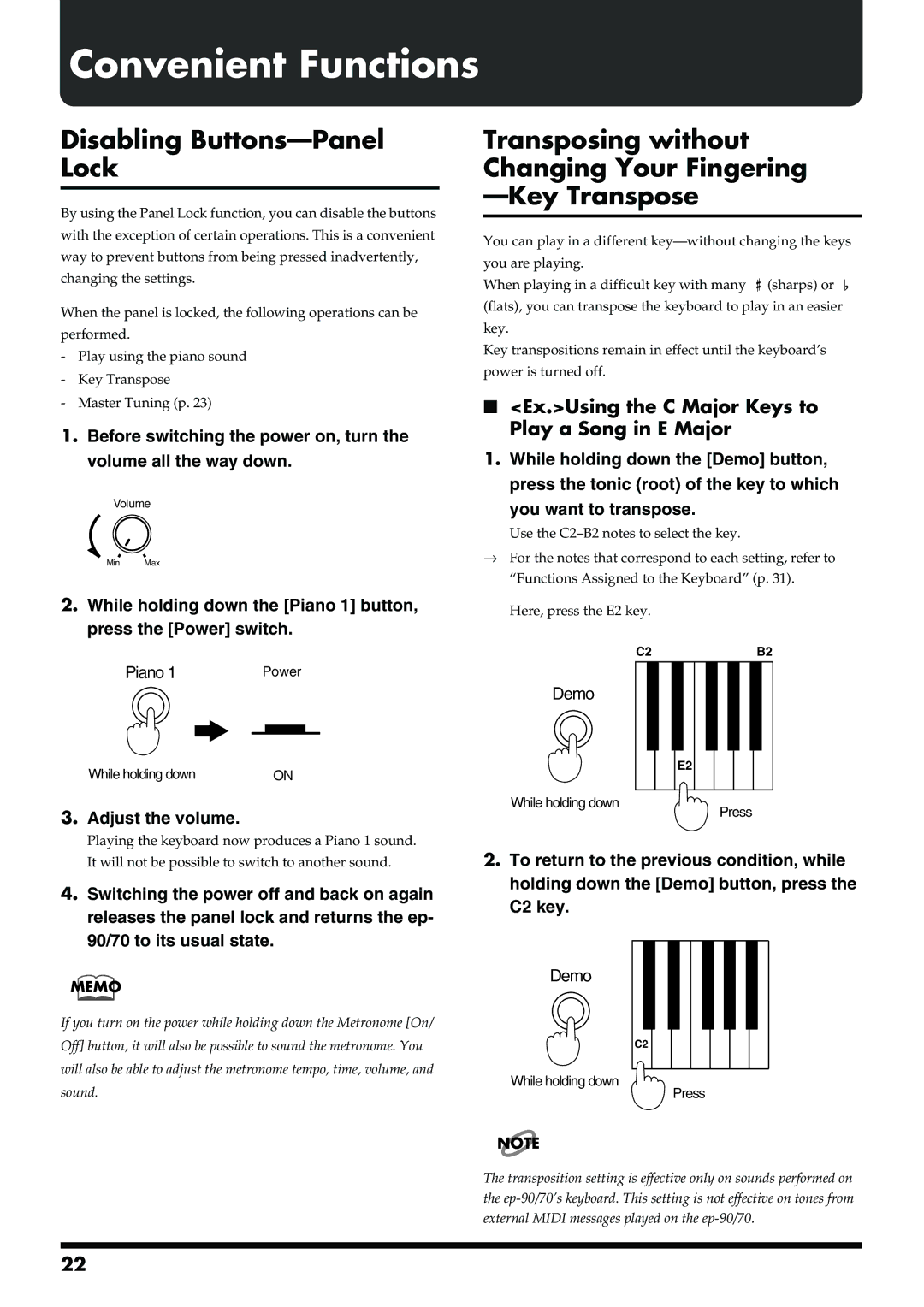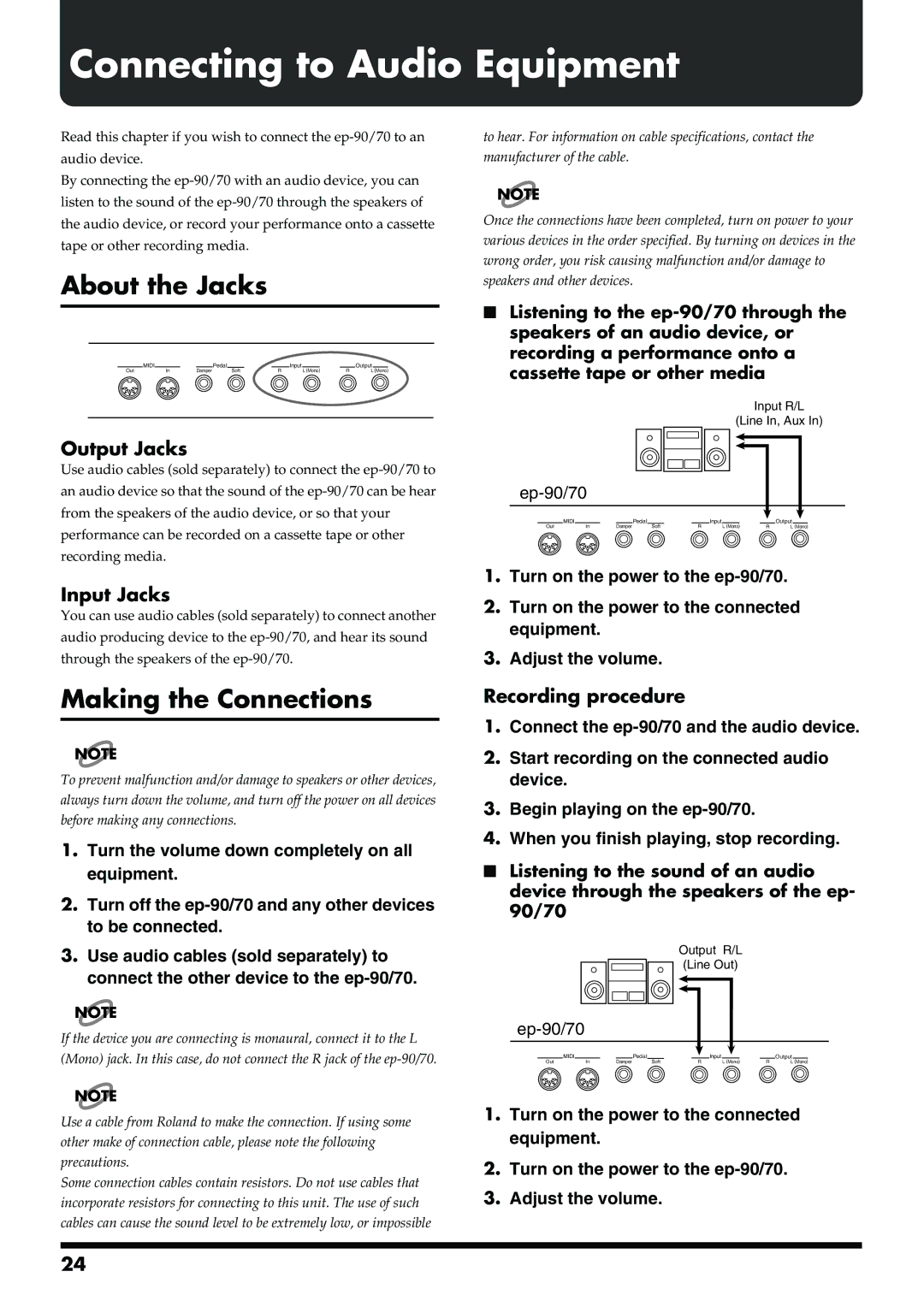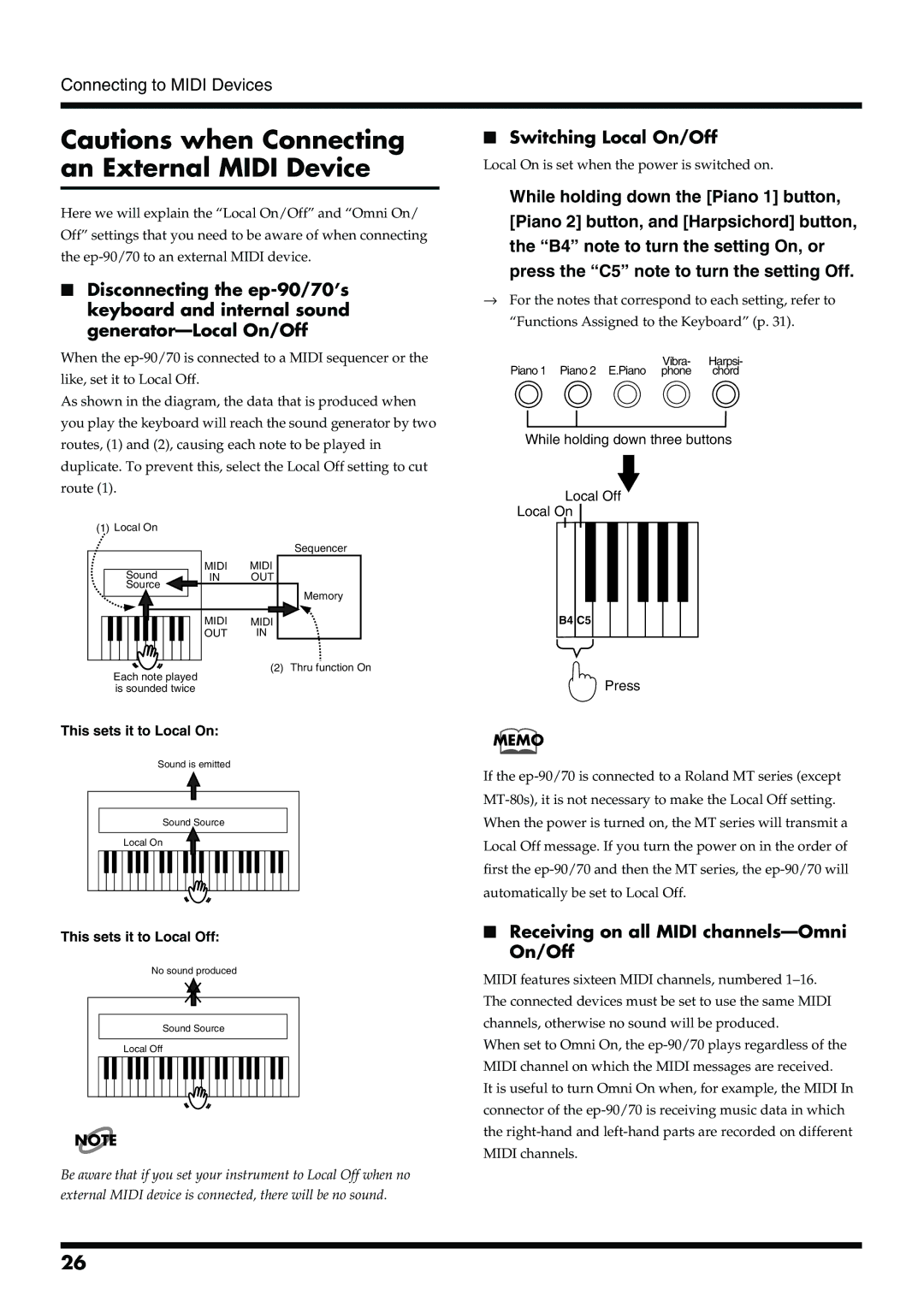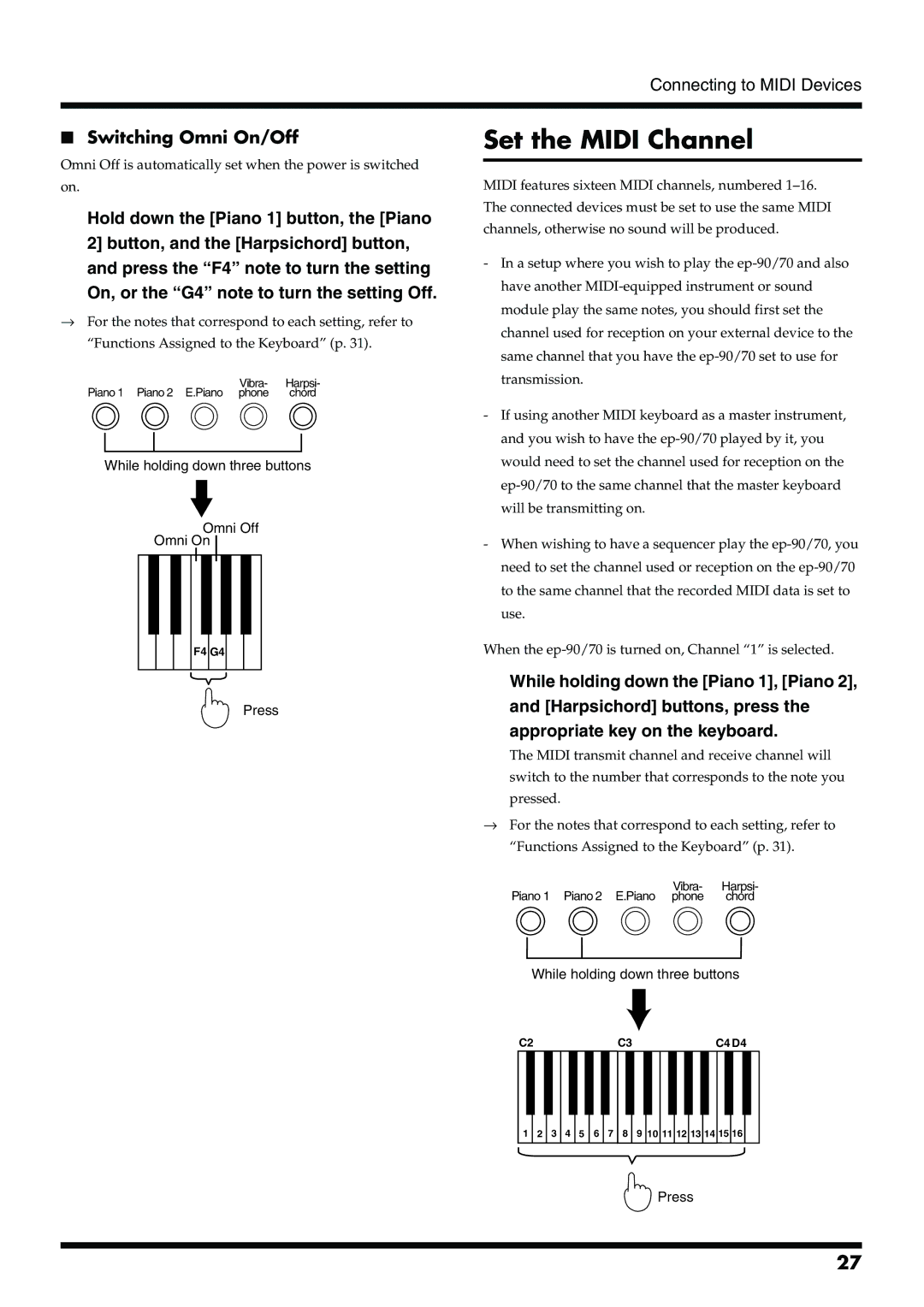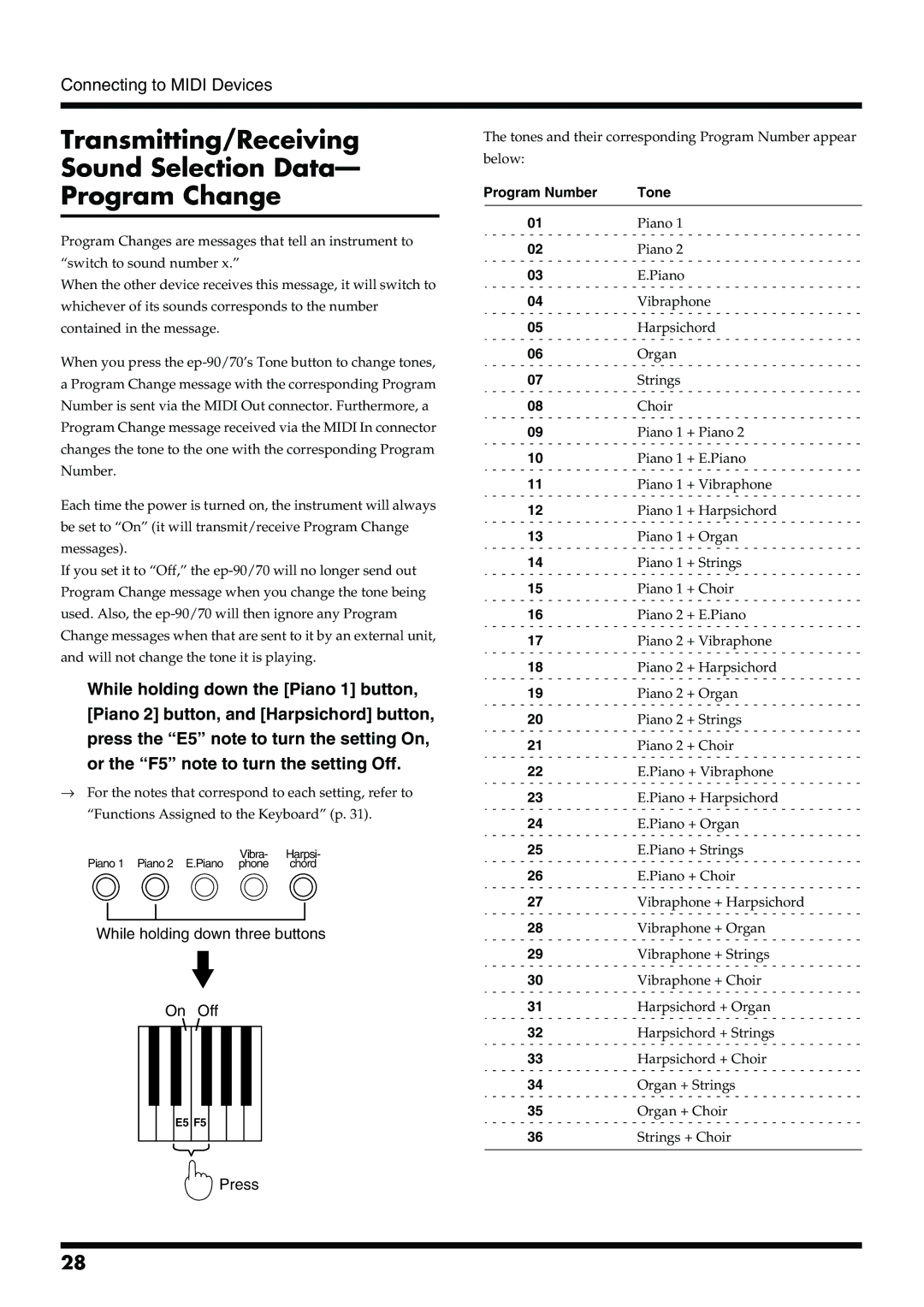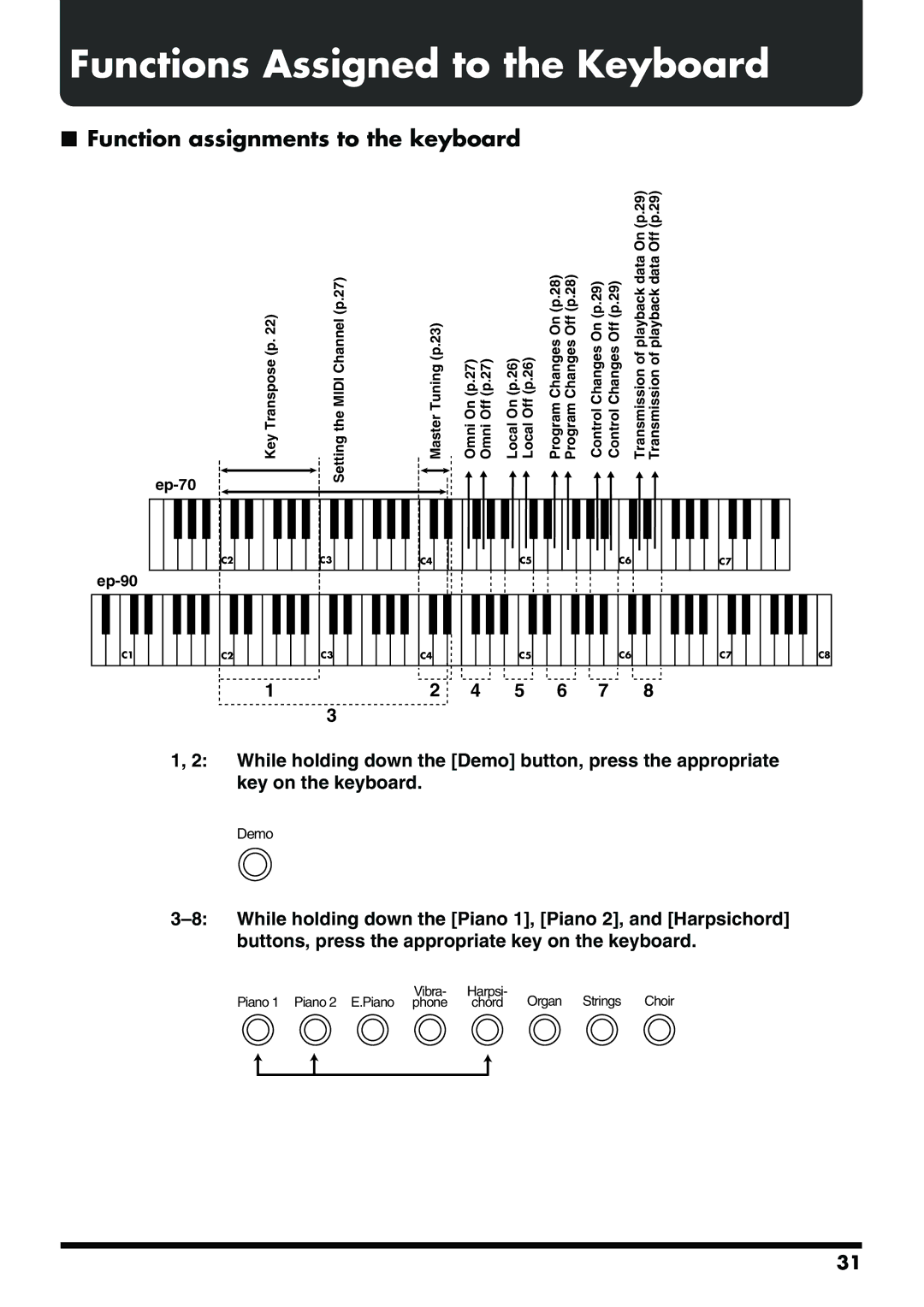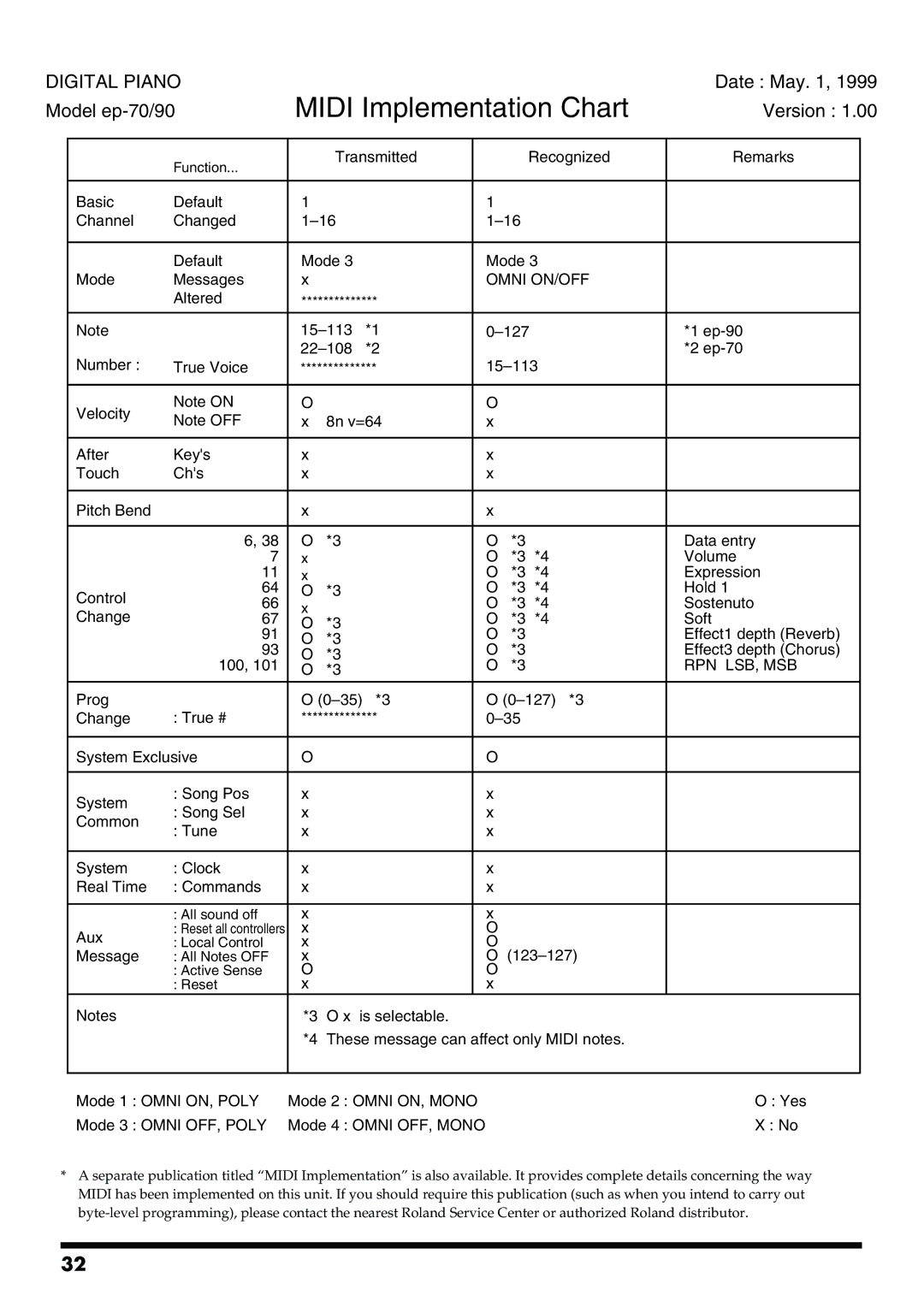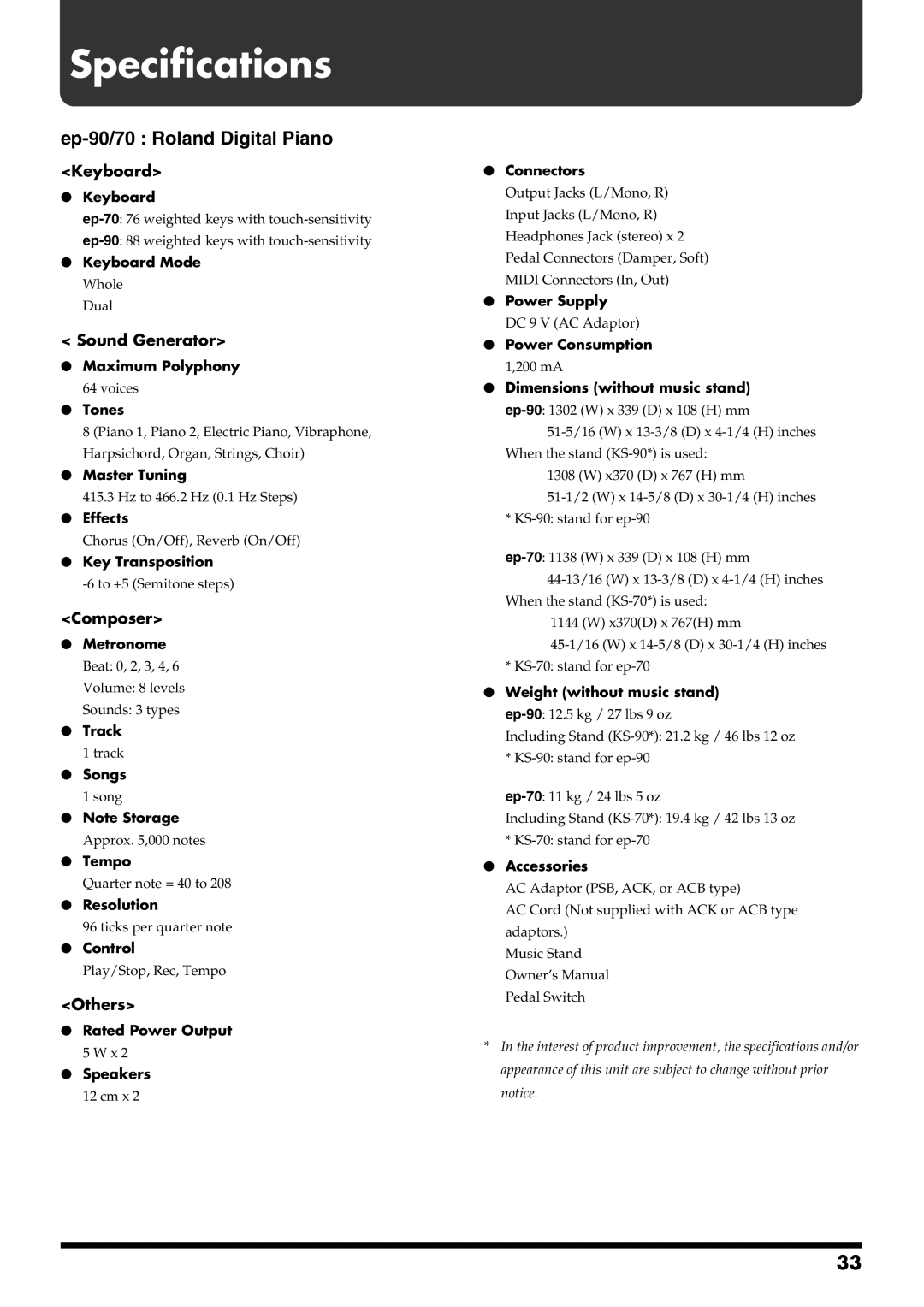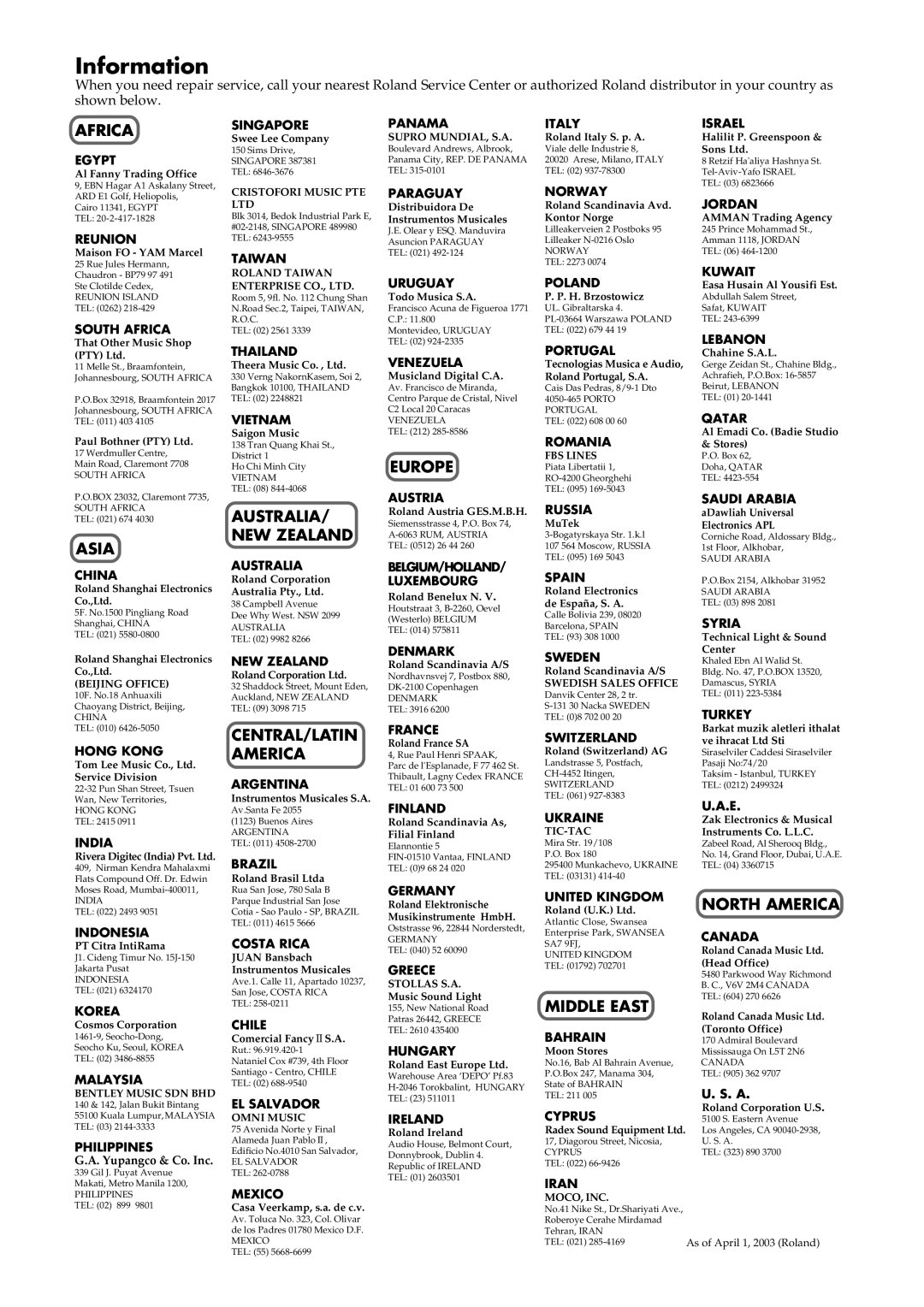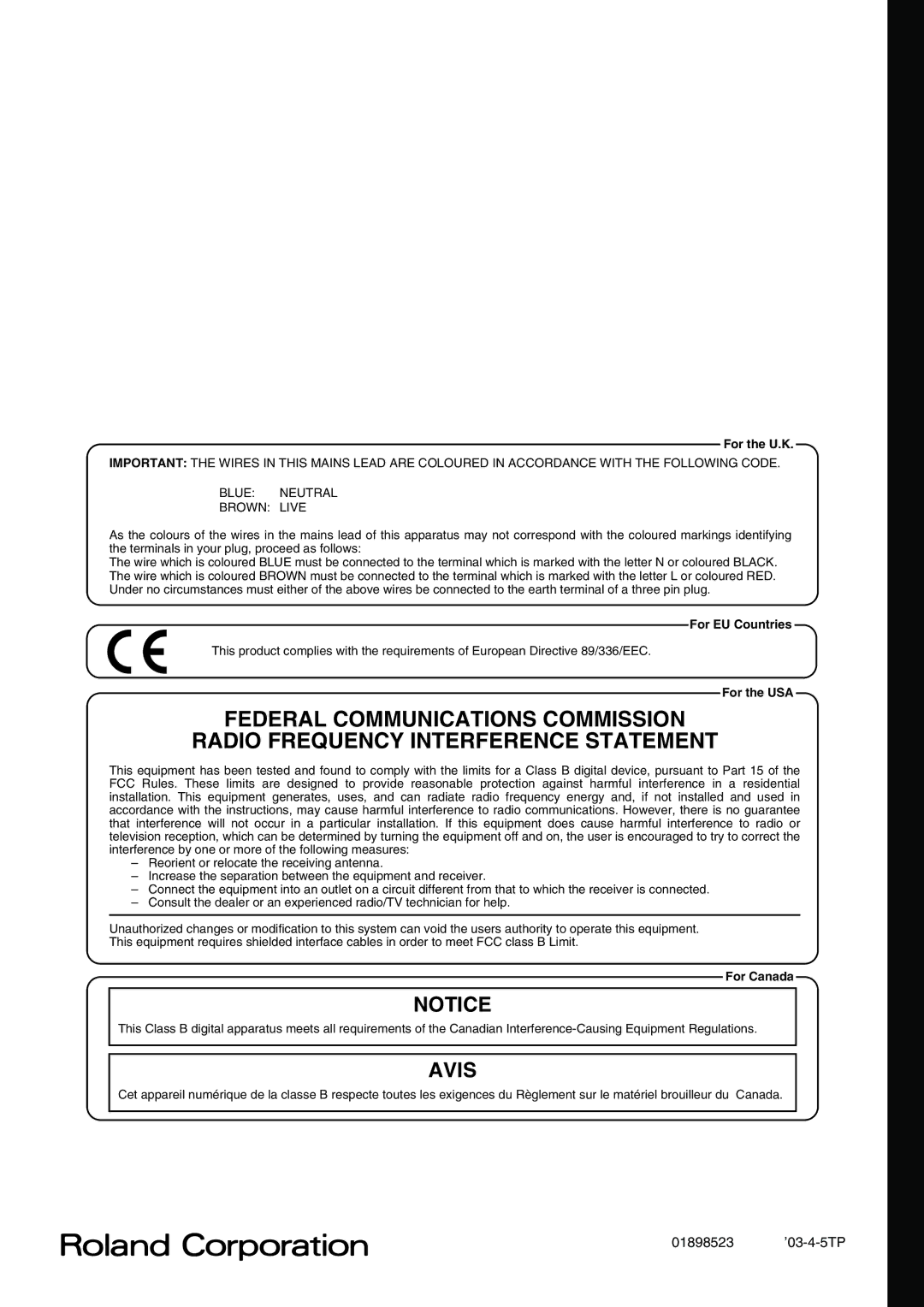
Troubleshooting
If you are encountering problems with the unit, please read the section below before assuming that there is a malfunction.
The piano cannot be switched on
❍Is the power cord properly connected? (p. 8)
No sound is produced
❍Is the [Volume] knob set to the minimum position? (p. 10)
❍Are headphones connected? (p. 10)
❍Is Local On/Off set to “Off”? (p. 26)
Demo songs do not play
❍Is Panel Lock on? (p. 22)
Metronome does not sound
❍Is Panel Lock on? (p. 22)
Buttons do not function
❍Is Panel Lock on? (p. 22)
Keyboard sound does not change
❍Is Panel Lock on? (p. 22)
Two sounds are produced when the keyboard is played
❍Is the keyboard in Dual Play mode? (p. 14)
The pitch of the keyboard sounds incorrect
❍Is the Master Tuning setting correct? (p. 23)
❍Is the Transpose setting correct? (p. 22)
The pedals are not functioning, or function intermittently
❍Are the pedals connected properly? (p. 9)
Can’t Record
❍Is Panel Lock on? (p. 22)
❍Is the [Demo] button’s indicator lit?
Press the [Demo] button; the button’s indicator goes out (p. 11).
❍The metronome sound or count sound is not recorded.
The recorded performance has been deleted
❍The performance data that you recorded will disappear when the power of the
❍If you record again after recording, the
Bass notes sound wrong/buzzing or vibration occurs
❍If you can’t hear the problem in the headphones: When playing at high volumes, resonance may occur in the piano itself or in objects near the piano. At times, other objects in the room, such as fluorescent lights or glass doors, could start vibrating. Such phenomenon becomes more prevalent when sounding the lower frequencies at high volume. To minimize such unwanted resonance, please observe the following:
-Locate the instrument so it is
-Reduce the volume.
-Increase the distance from the object that is resonating.
❍If you can hear the problem in the headphones: The problem may be for a different reason. Please contact your dealer.
In the upper range, the sound changes abruptly beyond a certain key
❍On an acoustic piano, notes in the upper one and a half octaves of the keyboard continue to sound until they decay naturally, regardless of the damper pedal. There is a difference in the timbre as well. Roland pianos faithfully simulate such characteristics of the acoustic piano. On the
<When the ep-90/70 is connected to an external device>
No sound is produced
❍Is the power to all equipment turned on?
❍Are the connections between
(p. 24, p. 25)
❍Is the MIDI channel setting correct? (p. 27)
❍Is the Omni On/Off setting correct? (p. 27)
Strange sounds (or two sounds) are produced when the
❍With the sequencer’s “Thru” function on, the same notes may be sounded twice. Set the
(p. 26).
The volume level of the instrument connected
to Input jacks is too low
❍Could you be using a connection cable that contains a resistor?
Use a connection cable that does not contain a resistor.
30
